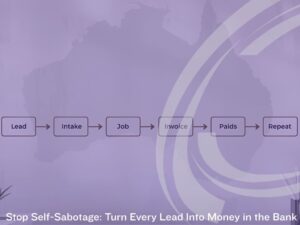Scaling Smart-A Consultant’s Playbook for Sustainable SME Growth
Australian small businesses power local jobs, community life, and national prosperity. Yet many owners tell us that growth is harder now. Input costs are unpredictable. Talent is tight. Capital is more expensive than it used to be. Customer expectations keep rising. A tested scale-up strategy is the most reliable way to grow without breaking what already works in this environment.
This playbook discusses how SBAAS guides clients in scaling with control. It explains what to fix first, what to measure weekly, when to hire or outsource, and how to align marketing, sales, operations, and finance so growth funds itself. It is written for Australian SMEs, with global lessons adapted to local rules, market signals, and cash realities.
You will see the phrase scale-up strategy a lot. That is deliberate. A scale-up strategy is not a slide deck. It is a disciplined pattern of choices about capacity, demand, cash, and risk that you repeat, review, and refine every month. Done well, your business grows faster, margins improve, cash flow strengthens, and customers get a consistently better experience. A scale-up strategy keeps you focused on what compounds results, not what creates noise.
Symptoms of unhealthy growth
Before you accelerate, check for warning lights. An effective scale-up strategy starts by removing friction that turns growth into grind.
- Sales rise, cash does not. Revenue grows, but the bank balance feels tight. Deposits lag, debtors stretch, and payables stack up. That is a working capital alarm your scale-up strategy must address.
- Delivery delays increase. Lead times blow out after every promotion. Project backlogs grow. Staff carry too many open jobs. Customer satisfaction drops first, then referrals.
- The owner is the bottleneck. Every decision waits for you. That stalls your scale-up strategy because the manager who approves everything is the system constraint.
- Quality slips at peak load. Rework rises when the pipeline is complete. Warranty claims, chargebacks, or unhappy reviews appear in clusters.
- Hiring feels constant, but productivity does not improve. You add headcount, yet output per person falls. Training and handover are inconsistent.
- Marketing fills the top, operations drown at the bottom. Campaigns run ahead of capacity. Sales pushes deals that the team cannot service on time.
- Costs creep faster than revenue. Discounts grow to “win the month”. Freight, overtime, and expedited purchases dent gross margin.
If you recognise two or more symptoms, pause. Fix the underlying constraint. A scale-up strategy that ignores these signals amplifies them. Scaling only makes sustainable sense when the core machine is stable and cash generative.

Capacity, demand, and working capital basics
Sustainable growth demands a shared language across the business. Three ideas anchor every practical scale-up strategy.
Capacity
Capacity is what your organisation can reliably deliver at your current standard of quality. People, processes, tools, and suppliers shape it. Capacity is not static. It improves with training, better scheduling, and clearer work design. It dips with absenteeism, turnover, and machine downtime. Treat capacity as a portfolio you actively manage. A scale-up strategy treats capacity gains as investments with expected returns.
Demand
Demand is what the market asks you to deliver, by product, service, region, and period. Good demand planning blends history with leading indicators such as enquiry volume, quote acceptance, web traffic, seasonality, and industry events. The point is not perfect prediction. It is to see change early enough to act. The best scale-up strategy sets clear rules for how campaign and capacity calendars talk to each other.
Working capital
Working capital is the cash tied up in inventory, work in progress, and receivables, net of payables. It fuels the daily rhythm of the business. Many Australian SMEs can grow faster by turning working capital quickly through better terms, faster invoicing, and tighter collections. A strong scale-up strategy sets explicit targets for sales outstanding, inventory days, and days payable outstanding, then assigns owners and routines to keep those targets.
Put simply, capacity must meet demand at a pace the balance sheet can fund. This is the engine room of a scale-up strategy. When you align these three, growth becomes repeatable, margins solidify, and risk drops.
Lead to cash cycle optimisation.
Most growth pain hides in marketing, sales, delivery, and finance gaps. The end-to-end lead-to-cash cycle shows where value leaks. A resilient scale-up strategy makes this cycle visible, measured, and continuously improved.
Define the stages
For a typical SME, the stages are attract, capture, qualify, propose, close, schedule, deliver, invoice, collect, and expand. Map your version on one page. Agree on the entry and exit criteria for every stage. Your scale-up strategy should make these criteria explicit so hand-offs are clean.
Create one pipeline
Keep one shared pipeline that shows both volume and workload. Marketing sees how many qualified opportunities exist. Operations sees when jobs will land. Finance sees cash timing. Your scale-up strategy lives or dies on this shared view.
Set service-level agreements
Define response times for leads, quote turnaround, job scheduling windows, invoice issue timing, and debtor follow-up. Measure actuals weekly. When your scale-up strategy uses these standards, customer experience becomes consistent.
Standardise offers
Build a priced menu with clear inclusions and exclusions. Add three options per proposal to lift average order value without complex custom work. A scale-up strategy that uses options avoids the trap of one-size pricing that undercharges complex jobs.
Automate hand-offs
Use structured forms and checklists so sales packages accurately reflect the scope and operations they must deliver: Automate invoice creation and payment reminders to shorten cash collection.
Close the loop
Feed delivery outcomes back into marketing. Make reviews, referrals, and case studies a standard end step. This turns the lead-to-cash loop into a flywheel. It helps your scale-up strategy produce more of the right demand for your capacity and improves lifetime value.

Hiring and outsourcing triggers
People decisions can either power growth or create hidden drag. Your scale-up strategy needs clear triggers to align hiring and outsourcing with demand and cash.
Define threshold metrics.
Examples:
- Average utilisation for core roles stays above 85% for six consecutive weeks.
- Backlog exceeds throughput twice weekly for three weeks.
- Overtime exceeds 8% of payroll for a quarter.
- Customer wait time breaches your promise on 15% of jobs in a month.
Use a skills matrix
Map current skills, required skills, and proficiency levels. This reveals whether your gap is a training issue, a process issue, or an actual capacity shortage. A scale-up strategy that sees skills avoids hiring by reflex.
Sequence talent moves
Start with cross-training and better scheduling. Then deploy casuals or contractors to cover peaks. Outsource specialist or low-frequency work that distracts your core team. Commit to permanent hires only when stable demand supports them. Your scale-up strategy should state the order and the financial guardrails.
Budget the full cost
In Australia, factor in award wages or agreements, superannuation, leave, payroll tax thresholds by state, and onboarding time. Hiring that ignores total cost can starve the scale-up strategy it is meant to serve.
Protect culture
Growth fails when new joiners dilute your standard. Keep values, safety, and quality non-negotiable. Document rituals that onboard people into your way of working. A scale-up strategy that protects culture unlocks productivity faster.
Forecasting scenarios and buffers for your scale-up strategy
Forecasting is not fortune-telling. It is a structured preparation. Your scale-up strategy needs three scenarios and explicit buffers that prevent a good month from becoming a bad quarter.
Build three scenarios. At the minimum model base, upside, and downside for the next four quarters. Vary only a few drivers that matter most: lead volume, win rate, average order value, job cycle time, and debtor days. For each scenario, test how much capacity you need and how much working capital the plan requires.
Set small, visible buffers. Examples:
- Capacity buffer. Keep 10 to 15% flex in rostered hours, supplier slots, or subcontractor agreements. Use it only to absorb peaks, not to mask chronic shortfalls.
- Cash buffer. Hold a minimum cash days target. Many SMEs target one month of operating expenses in cash or undrawn facility availability.
- Time buffer. Protect two hours per week per manager for improvement work. Without reserved time, the team never fixes the root cause.
Link campaigns to capacity
Do not launch a heavy promotion without confirming the people, materials, and supplier capacity to fulfil it. The best scale-up strategy aligns promotion calendars with delivery calendars.
Update monthly
Rolling 12-month forecasts beat annual plans. Tie your forecast cadence to your lead time. If your typical job lead time is three weeks, refresh demand and capacity weekly. If it is three months, refresh monthly with a mid-month check. Your scale-up strategy should treat forecasting as a habit, not an event.
Marketing and sales alignment during scale
Marketing and sales alignment is not a slogan. It is a series of deliberate choices that make your scale-up strategy real in the market and viable in operations.
Agree on the ideal customer profile. Define profitable segments by need, urgency, budget, and service fit. Stop chasing requests that your model cannot serve well. Your scale-up strategy should clearly state who you will not serve as clearly as you will.
- Build one revenue ritual.
- Hold a weekly 30-minute pipeline stand-up.
- Marketing brings leads and content performance.
- Sales bring stage progression and obstacles.
- Operations bring capacity.
- Finance brings a cash view.
- Everyone leaves with a small list of actions.
This rhythm keeps the scale-up strategy connected from campaign to cash.
Codify handshakes
When a lead becomes an opportunity, what information must be attached before a handover? If marketing counts every download as a lead, sales will drown. If sales push half-scoped deals to delivery, delivery will miss dates.
Measure customer experience
Use a simple, recurring measure of satisfaction and referral intent. Track themes from reviews and service tickets. Protect the promise when demand surges. Your scale-up strategy must defend the customer experience even when capacity is tight.
Align incentives
Pay on profitable growth, not just top line. Reward on-time delivery, repeat purchases, and cash collected, where roles influence those outcomes. Misaligned incentives are poison for any scale-up strategy.
Governance for a scale-up strategy without chaos
Good governance keeps growth clean. It is not bureaucracy. Clarity stops minor issues from becoming legal, reputational, or financial harm.
Define decision rights
Document who decides, who inputs, and who executes for recurring choices such as pricing, discounting, hiring, vendor selection, and debt terms. Clear decision rights speed a scale-up strategy and reduce rework.
Keep directors informed
If you operate as a company, directors carry legal duties. Give the board or owner-directors a monthly dashboard that covers solvency, cash runway, debtor ageing, key risks, and compliance events. Mature governance protects your scale-up strategy when conditions shift.
Standardise policies that matter
Prioritise safety, privacy, credit terms, delegations of authority, conflicts of interest, and complaints handling. Keep them short and applied. Train new joiners on the few policies that control the most risk.
Watch early insolvency signals.
Track declining gross margin, persistent negative operating cash flow despite profit, repeated tax arrears, and creditor pressure. If in doubt, seek timely advice. A strong scale-up strategy includes an escalation path long before a crisis. It also ensures timely and accurate financial reporting, so decisions are based on facts.

Implementation timeline and milestones
A practical scale-up strategy rolls out in sprints. Here is a proven sequence that fits most Australian SMEs. Adapt the dates to your fiscal year and seasonality.
Days 0 to 30: Stabilise and see clearly
- Map your lead to cash flow on one page.
- Set a weekly operating rhythm with revenue and delivery stand-ups.
- Establish baseline metrics: leads, win rate, average order value, on-time delivery, rework, debtor days, cash days, utilisation.
- Create a live capacity view for the next 8 to 12 weeks.
- Freeze optional projects that distract from throughput.
- Document decision rights and publish a simple RACI for routine choices.
Days 31 to 60: Fix the most significant constraint
- Identify the primary bottleneck using the baseline data.
- Run a focused improvement sprint on that bottleneck. Examples: reduce quote turnaround time, standardise job packs, tighten scheduling, or accelerate invoicing.
- Implement minimum viable automation for payment reminders and job status updates.
- Set target buffers for capacity, cash, and time.
- Pilot a structured daily management board for frontline teams.
Days 61 to 90: Align demand with capacity
- Build a shared forecast in three scenarios.
- Link the subsequent two campaigns to available capacity and materials.
- Introduce service-level agreements across hand-offs.
- Pilot a standardised three-option pricing approach to lift average order value.
- Publish an updated credit policy and collections playbook.
- Train managers to coach rather than firefight so your scale-up strategy becomes a habit.
Days 91 to 180: Scale what works
- Add talent according to triggers. Cross-train first, then outsource, then hire.
- Negotiate supplier capacity and volume-based pricing to support growth.
- Upgrade dashboards so managers can see site, team, and product performance.
- Embed customer feedback loops and share theme summaries monthly.
- Conduct a light governance review and tighten decision rights.
- Refresh your risk register so your scale-up strategy stays resilient.
Days 181 to 365: Institutionalise and expand
- Refresh the three-year growth thesis and capital plan.
- Extend your scale-up strategy to a second line of service or a new region if buffers hold and core throughput remains stable.
- Document your operating system so new managers can run the playbook.
- Explore selective partnerships, alliances, or channel sales to widen reach without heavy fixed costs.
- Run a post-implementation review and reset targets for year two.
Milestones to track every month
- Throughput per full-time equivalent rises while on-time delivery holds.
- Debtor days fall or stay within target even as revenue grows.
- Customer satisfaction stays stable or improves during peak periods.
- Cash days on hand stay above your minimum buffer.
- Staff engagement improves as you remove friction from their work.
This timeline converts your scale-up strategy from a plan on paper into a habit across teams.

The Australian context and global signals
Australian SMEs operate in a distinct setting. Regulation is clear and enforced. Employment frameworks evolve. Customer expectations mirror global leaders, not local averages. Capital markets price risk quickly. Supply chains run long distances with seasonal spikes. In this mix, a robust scale-up strategy becomes a competitive defence.
Watch three signals. First, domestic demand and investment intentions. Second, the cost of capital and creditor behaviour shape working capital pressures. Third, labour capacity and wage settings influence when you should automate, outsource, or hire. At the same time, learn from global operators who refine leads to cash, reduce revenue leakage, and scale with disciplined governance. Your local scale-up strategy can borrow and adapt proven ideas to Australian law, tax, and customer norms.
Practical implications for owners:
- Treat working capital as your cheapest source of growth funding. Collect faster, standardise deposits, and align supplier terms.
- Be clear about solvency duties. Directors should focus frequently on cash runway, tax obligations, and debtor ageing.
- Tie marketing to fulfilment. Campaigns must reflect the real capacity of your delivery system. When in doubt, stagger offers rather than accept backlog blowouts.
Keep the customer promise front and centre. Your scale-up strategy is only as strong as the experience your customer receives when demand surges.
FAQ
How do I know if my business is ready to scale?
You are ready when three conditions hold. First, you have repeatable demand with clear proof that customers will keep buying. Second, your delivery is consistent with the current volume and quality, which meets your promise. Third, your cash engine is healthy, with debtor days under control and enough buffer to fund growth. If you cannot tick all three, refine the offer and the operating rhythm before accelerating. A scale-up strategy that starts from stability compounds your strengths.
What is the lead to cash cycle, and why does it matter?
The lead-to-cash journey is the journey from first contact to payment and expansion. It is the place where growth either builds cash or burns it. If stages are unclear, hand-offs are sloppy, or invoicing lags, you grow top line but starve the bank account. Your scale-up strategy becomes predictable when you map, measure, and manage lead to cash. You win the right customers, set accurate expectations, deliver first time right, and collect faster.
How do I align marketing and operations during growth?
Create one truth. Keep a single forecast and pipeline that everyone sees. Connect campaign calendars to capacity plans. Use short service-level agreements at each hand-off. Meet weekly to review pipeline, capacity, and cash. Share customer feedback with the whole team. When you run one shared rhythm, your scale-up strategy feels calm in the middle of growth.
How SBAAS helps you execute
Strategy: growth roadmaps and milestones
Link your forecast, funding plan, and delivery model so growth pays its way. Engage the SBAAS Strategy for roadmaps you can run every week.
Marketing Growth: pipeline design, campaign to capacity alignment
Build campaigns that your team can fulfil without overtime blowouts. Explore SBAAS
Finance: working capital planning, growth funding options
Tighten debtor days, set cash buffers, and assess funding without risking control.
Operational Excellence: capacity modelling, bottleneck removal
Lift throughput without losing your standard. Start with SBAAS Operational Excellence:
Actually Supported Business Coaching: owner decision discipline
Turn your scale-up strategy into a management habit with weekly cadence, accountability, and practical help:
Putting it all together
Scaling smart is simple to say and hard to do. It means you grow only what you can deliver well and provide only what strengthens your cash engine. It means the whole business follows one plan, pipeline, and rhythm. It means you trade noise for clarity, and hurry for habits.
Start this month:
- Map the system.
- Fix one constraint.
- Link campaigns to capacity.
- Protect buffers.
- Then repeat.
That is a real scale-up strategy. It creates a business that works better for customers, staff, and owners, not just a bigger one.
When ready, SBAAS will help you design and run your scale-up strategy with expert support across strategy, finance, marketing, operations, and coaching. Book a conversation with our team or learn more about who we are and how we work on our About Us page.
Sources
Reserve Bank of Australia, Statement on Monetary Policy, August 2025
https://www.rba.gov.au/publications/smp/2025/aug/pdf/statement-on-monetary-policy-2025-08.pdf
Reserve Bank of Australia, Statement on Monetary Policy – August 2025: Economic Conditions
https://www.rba.gov.au/publications/smp/2025/aug/economic-conditions.html
Australian Bureau of Statistics, Counts of Australian Businesses, including Entries and Exits
https://www.abs.gov.au/statistics/economy/business-indicators/counts-australian-businesses-including-entries-and-exits/latest-release
ABS Business Indicators summary page
https://www.abs.gov.au/statistics/economy/business-indicators
Australian Small Business and Family Enterprise Ombudsman, Number of small businesses in Australia
https://www.asbfeo.gov.au/small-business-data-portal/number-small-businesses-australia
ASBFEO, Number of small businesses in Australia, August 2024 PDF
https://www.asbfeo.gov.au/sites/default/files/2024-09/Number%20of%20small%20businesses%20in%20Australia_Aug%202024.pdf
ASIC, Insolvency statistics
https://asic.gov.au/about-asic/corporate-publications/statistics/insolvency-statistics/
ASIC, RG 217 Duty to prevent insolvent trading: Guide for directors
https://asic.gov.au/regulatory-resources/find-a-document/regulatory-guides/rg-217-duty-to-prevent-insolvent-trading-guide-for-directors/
ASIC, RG 217 PDF (published 6 December 2024)
https://download.asic.gov.au/media/f4moc3we/rg217-published-6-december-2024.pdf
ASIC, Directors and financial reporting, Information Sheet 183
https://asic.gov.au/regulatory-resources/financial-reporting-and-audit/directors-and-financial-reporting/
business.gov.au, Growing your business checklist
https://business.gov.au/planning/growing-your-business-checklist
business.gov.au, Guide to managing cash flow
https://business.gov.au/finance/cash-flow/guide-to-managing-cash-flow
business.gov.au, Cash flow hub
https://business.gov.au/finance/cash-flow
ATO, Manage your business cash flow
https://www.ato.gov.au/businesses-and-organisations/preparing-lodging-and-paying/record-keeping-for-business/setting-up-and-managing-records/manage-your-business-cash-flow
ATO, Cash Flow Kit
https://www.ato.gov.au/businesses-and-organisations/starting-registering-or-closing-a-business/starting-your-own-business/good-business-habits/cash-flow-kit
SAP Learning, Describing the SAP Lead to Cash business process and its stages
https://learning.sap.com/learning-journeys/explore-the-lead-to-cash-business-process-in-sap-customer-experience/describing-the-sap-lead-to-cash-business-process-and-its-stages
SAP Learning, Describing the Lead to Cash business process
https://learning.sap.com/learning-journeys/explore-integrated-business-processes-in-sap-s-4hana-/describing-the-lead-to-cash-business-process_eb851981-68d6-4b08-89c9-747f979cf18b
Gartner Finance Glossary, Definition of Demand Planning
https://www.gartner.com/en/finance/glossary/demand-planning
Gartner, Improve Demand Planning With Consumption Data
https://www.gartner.com/en/articles/demand-planning
Australian Institute of Company Directors, Small business governance
https://www.aicd.com.au/corporate-governance-sectors/small-business.html
Deloitte Australia, Working Capital Insights 2023: Cashing In on Success
https://www.deloitte.com/au/en/services/consulting-financial/analysis/working-capital-insights.html
PwC Australia, Working Capital Management
https://www.pwc.com.au/deals/business-restructuring/working-capital-management.html
PwC Australia, Working Capital Management overview PDF
https://www.pwc.com.au/publications/pdf/pwc-wcm-overview.pdf
Productivity Commission, Quarterly productivity bulletin – September 2024
https://www.pc.gov.au/ongoing/productivity-insights/bulletins/quarterly-bulletin-september-2024
Productivity Commission, Quarterly productivity bulletin – September 2024 PDF
https://www.pc.gov.au/ongoing/productivity-insights/bulletins/quarterly-bulletin-september-2024/bulletin-september-2024.pdf
Productivity Commission, Quarterly productivity bulletin – December 2024
https://www.pc.gov.au/ongoing/productivity-insights/bulletins/quarterly-bulletin-december-2024
Productivity Commission, Productivity insights hub
https://www.pc.gov.au/ongoing/productivity-insights

Eric Allgood is the Managing Director of SBAAS and brings over two decades of experience in corporate guidance, with a focus on governance and risk, crisis management, industrial relations, and sustainability.
He founded SBAAS in 2019 to extend his corporate strategies to small businesses, quickly becoming a vital support. His background in IR, governance and risk management, combined with his crisis management skills, has enabled businesses to navigate challenges effectively.
Eric’s commitment to sustainability shapes his approach to fostering inclusive and ethical practices within organisations. His strategic acumen and dedication to sustainable growth have positioned SBAAS as a leader in supporting small businesses through integrity and resilience.
Qualifications:
- Master of Business Law
- MBA (USA)
- Graduate Certificate of Business Administration
- Graduate Certificate of Training and Development
- Diploma of Psychology (University of Warwickshire)
- Bachelor of Applied Management
Memberships:
- Small Business Association of Australia –
International Think Tank Member and Sponsor - Australian Institute of Company Directors – MAICD
- Institute of Community Directors Australia – ICDA
- Australian Human Resource Institute – CAHRI
Our Consulting Services

Management Consulting
Compliance & Risk

Professional Writing Services
Consistency in Communication

Small Business Consulting
Sustainable Businesses

Start-ups
Set-up for Success
Further reading

Pragmatism Wins: How Australian Businesses Turn AI Hype Into Real Results
Australian organisations are moving beyond experiments. This article shows how Australian businesses across all sectors and sizes can scale value, manage risk, and boost productivity with pragmatic AI.

Stop Self-Sabotage: Turn Every Lead Into Money in the Bank
Winning work is hard. Losing time and cash to clunky admin is optional. This guide shows how to design an automated business process that captures leads, books jobs, issues invoices with timely reminders, and keeps clients returning. Plain English, practical steps, and a sharp focus on simplification, speed, and cash flow.

Seeing the Wrong Picture: What Most Business Owners Miss When Reviewing Their Performance
Business owners aren’t short on data, but many are missing what matters most. Discover what most business owners miss when reviewing their performance and how to shift from surface-level tracking to strategic insight.

Navigating Economic Uncertainty: A Roadmap for Australian Small Businesses
Discover how global economic shifts and local consumer sentiment are reshaping Australian small businesses. Equip yourself with actionable insights and strategies to thrive amidst uncertainty.

The Hidden Cost of Success: How Leadership Burnout is Crippling Australia’s Small Business Sector
Leadership burnout is rising fast across Australia’s small business sector. This article unpacks what it looks like, what causes it, and how SME leaders can protect themselves and their teams before the damage becomes irreversible.

From Centre to the Edges: A Practical Guide to the Political Left to Right Scale for Australian Business
We hear “far left” and “far right” every day. This guide starts in the middle, explains each step to the edges, and shows what the political left-to-right scale means for Australian enterprises of all sizes.
SBAAS Events
What our clients are saying about us
Posted onTrustindex verifies that the original source of the review is Google. Eric and Trudi recently wrote a tender for me and the experience was amazing. I went into the process in a state of complete overwhelm. Eric was able to break it down into achievable chunks for me, and reassure me that I had a great service and business model to offer. I came out the other end of the process with all of my business policies, a better understanding of my offer, and a foundation to launch all future tender applications. Eric took all of my information and turned it into a pretty package that I could market.Posted onTrustindex verifies that the original source of the review is Google. SBAAS were fantastic to work with on a detail-heavy tender with a tight turnaround. Their team helped us shape and compile our content to deliver a strong, high-quality submission. Highly recommend SBAAS to anyone looking for strategic support with tender development, with a touch of good humour along the way.Posted onTrustindex verifies that the original source of the review is Google. We engaged SBAAS to support the development of a complex government tender and couldn’t be happier with the outcome. SBAAS' professionalism, attention to detail, and ability to quickly understand our business and translate that into a compelling, well-structured submission were exceptional. They were responsive, collaborative, and a genuine extension of our team. Highly recommend for anyone looking for strategic, high-quality bid and tender writing support.Posted onTrustindex verifies that the original source of the review is Google. Eric and Team go above and beyond. They do an excellent job with researching to get everything that is legally required for Policies and QMS. Would recommend them them to everyone especially all the bookkeepers and accountants. Thank you guys, and extreme job. Love you work as always. 😀Posted onTrustindex verifies that the original source of the review is Google. Extremely professional and far exceeded by expectations. I will definitely be using their services again and highly recommend them. They have a spirit of excellence in everything they do which shines through when dealing with them.Posted onTrustindex verifies that the original source of the review is Google. Impressive consulting experience! The team is highly professional, with a hands-on approach that adds real value. Their dedication and expertise truly stand out. Highly recommended!Posted onTrustindex verifies that the original source of the review is Google. Super knowledgable company that provides great advice and support for small business. Super friendly, highly recommend.Posted onTrustindex verifies that the original source of the review is Google. As a new business owner, I recognised the value in seeking a business coach to help me achieve significant goals. After a disappointing experience with a previous coach, I was initially hesitant to try again. However, after seeing SBAAS's complimentary action plan, I thought there was no harm in investigating. Eric quickly identified gaps in my systems, and through a few targeted adjustments, I saw an immediate increase in both leads and sales. These changes also improved profitability—highlighting a major issue I hadn’t been aware of, as my previous coach’s guidance had me working for less than $7 per hour! I look forward to continuing working with Eric.
